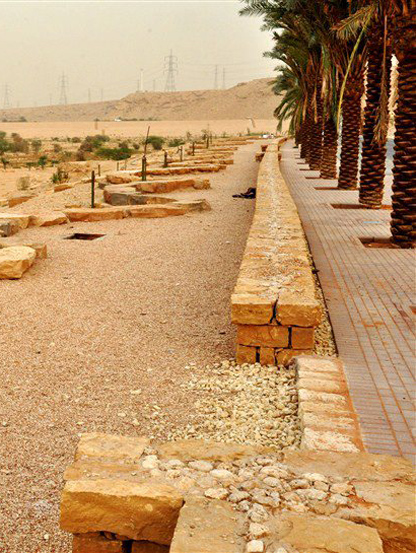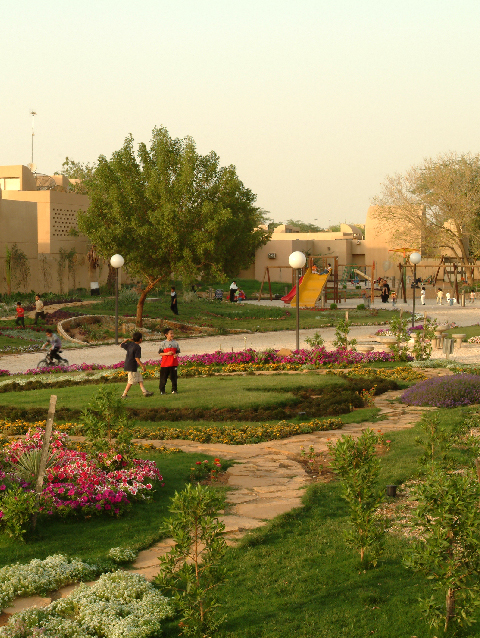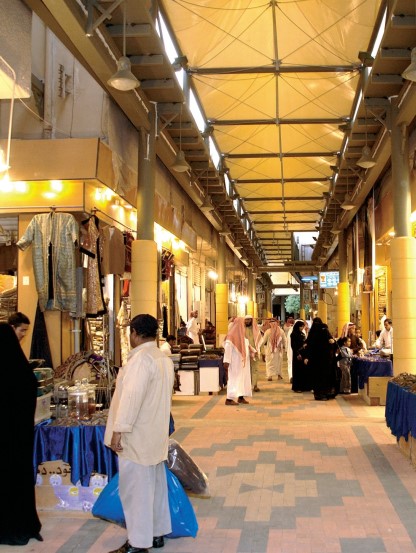HOME / PROGRAMS AND PROJECTS
Mosques developed by RCRC
The Royal Commission for Riyadh City has integrated the requirements of religious and material life into a mix that reflects the integrated Islamic vision. These mosques across Riyadh, city and region, have combined the maintenance of Islamic controls in mosques architecture with respect for traditional architecture.
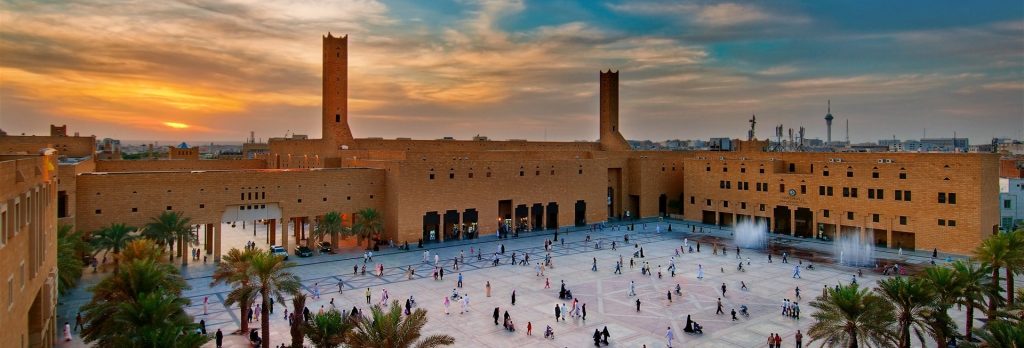

Imam Turki bin Abdullah Grand Mosque
The Imam Turki bin Abdullah Mosque, known as the Grand Mosque, is the most famous mosque in Riyadh. It was a meeting center for scientists and students and witnessed major historical events, which fascinated foreign travelers and made them write elaborately about it.
The Royal Commission for Riyadh City reconstructed this mosque in its previous location as part of its program to develop the Qasr Al-Hukm area in downtown Riyadh, on an area of 16.8k m2, to accommodate around 17,000 worshippers and was reopened in the month of Sha ‘ban in 1413 AH.
The grand mosque consists of two separate praying places for men and women; and an outdoor square of 4.8k m2. In addition to two libraries, one for men and one for women, each with an area of approximately 325 m2, as well as government offices, above 50 shops and two 50-meter-high beacons erected on both sides of the mosque. Inspired by traditional architecture, the mosque is connected to Al-Hukm Palace through two bridges on the first floor through the Safat Square.
The Imam Turki bin Abdullah Grand Mosque won the Aga Khan International Prize for Architecture in 1415 AH (1995), during the award session in Sulu, Indonesia.
Sheikh Mohammed bin Ibrahim Mosque
The Sheikh Mohammed Bin Ibrahim Al-Sheikh Mosque is a historic mosques located in the Qasr Al-Hukm area in Riyadh. It served as a beacon of science and knowledge for decades and RCRC has reconstructed it at its previous site on an area of 9,000 m2. It contains two separate praying places for men and women, a yard and hallway, as well as offices for the General Presidency of the Commission for Promotion of Virtue and Prevention of Vice. In addition to maintenance facilities, shops, a library, and parking lots.
The mosque was built in a harmonious and functionally consistent manner with four development programs implemented by the commission in the region. This included the Souk Al-Zal Development Program, the Headquarters of the General Court, the Headquarters of the Criminal Court, and the Dukhna Square.
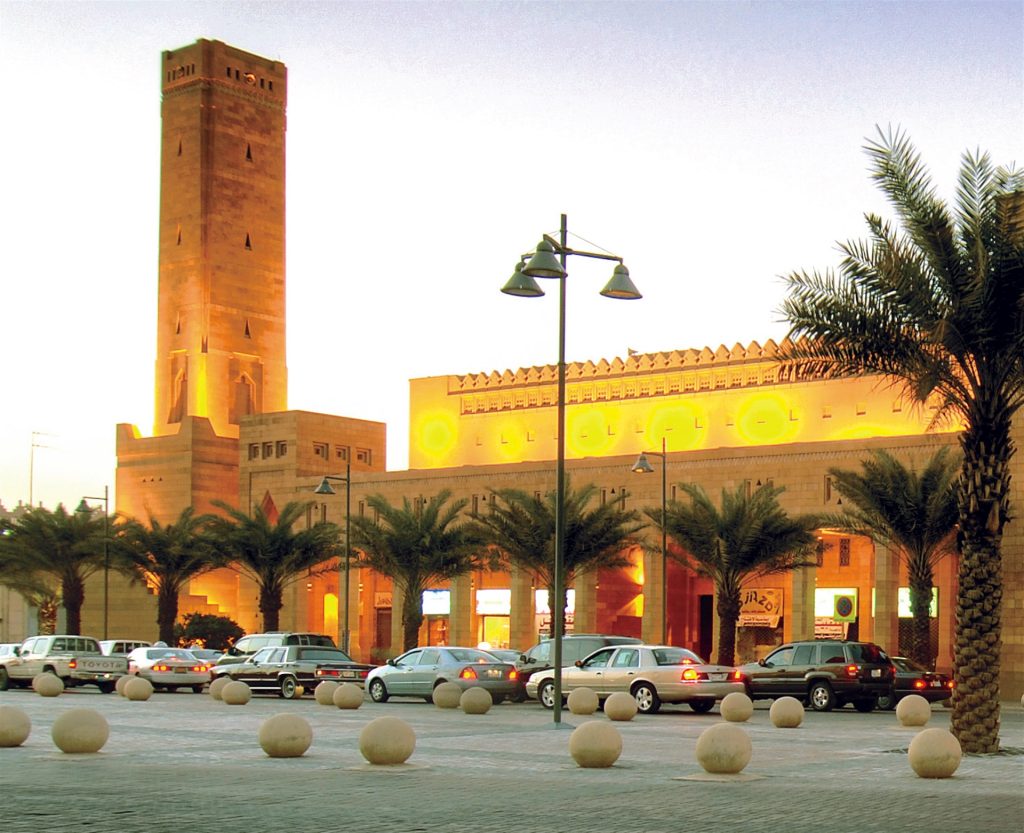
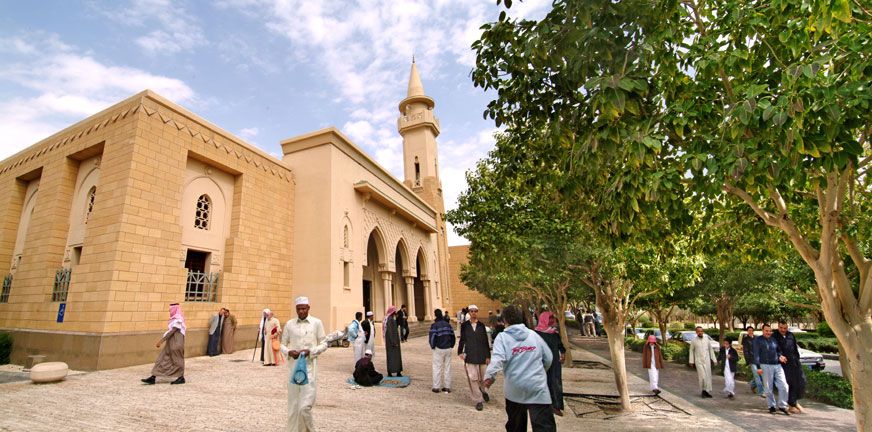
King Abdulaziz Mosque
The “King Abdulaziz Mosque” was first established within the Al-Murabba Palace Complex built by King Abdulaziz. It remained in its traditional construction until the commission restored it and modernized it within its program to develop the “King Abdulaziz Historical Center” in 1419 AH.
Aspects of development include the complete restoration and rehabilitation of the mosque in terms of architecture, engineering, and services. In addition to service constructions and aesthetic walls consistent with the urban pattern of the historical center area that embraces the mosque to increase its capacity to more than 5,000 worshippers, on an area of 5540 m2.
The King Abdulaziz Historical Center has been awarded the King Abdullah II Bin Al Hussein Award for Creativity, Arab City category, in the field of Urban Projects and Research at the second session of the Prize in 1424 AH (2004). The Center also won the Prince Sultan bin Salman Award for Urban Heritage, in its first session in 1427 AH. It also won first place and the Gold Prize in the British Ecological Society Award, the Urban Projects category, in London, 1424 AH (2007).
Al-Madi Mosque
The commission built the “Al-Madi Mosque”, located in the eastern part of the King Abdulaziz Historical Center, overlooking King Faisal Street, and is one of the first architectural facilities in the Kingdom that used modern techniques and local soil (compressed bricks) in its construction.
The design of the mosque blends well with the urban fabric of the historical center. The mosque preserved all elements of the traditional mosque architecture, from the presence of the courtyard (Al-Sarhah) and the minaret staircase, as well as some aesthetic elements similar to (Hadayir) in the local architecture.
The mosque was built on an area of 581 m2, accommodating 500 worshippers, and it was opened in the month of Sha ‘ban in 1425 AH. It received international awards, including the “First Prize of the Organization of Islamic Capitals and Cities” at its seventh session held in the Turkish capital Ankara, in 1428 AH for municipal service projects.
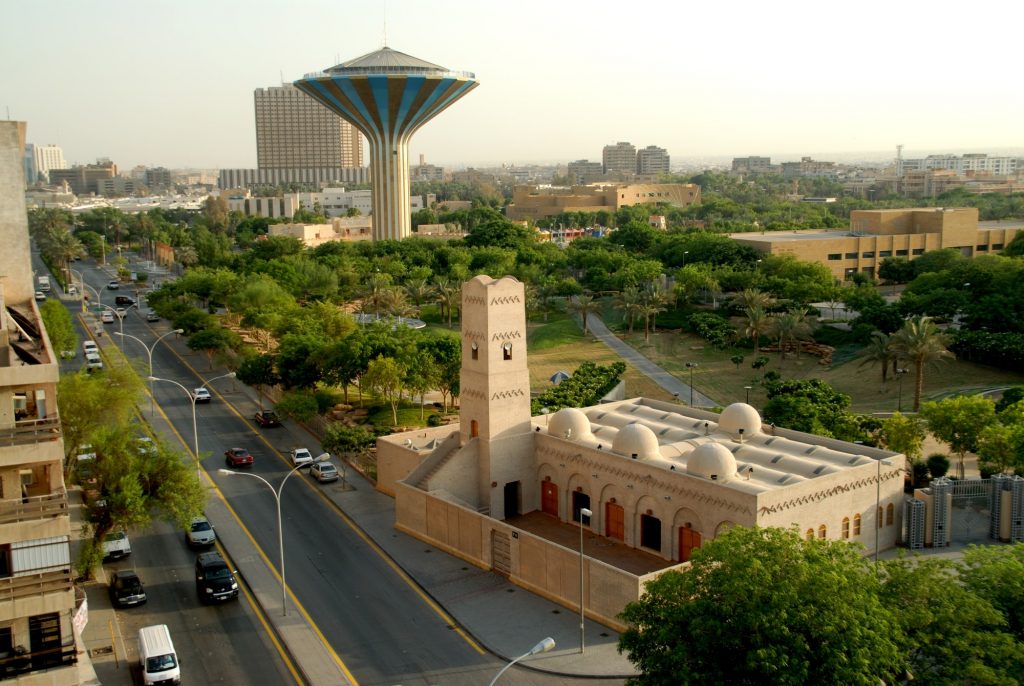

Imam Mohammed bin Saud Mosque
The Royal Commission for Riyadh City reconstructed the Imam Muhammad bin Saud Mosque in Diriyah Governorate on an area of 50,000 m2, to accommodate about 4900 worshippers. It was opened in the month of Rajab in 1419 AH. It’s surrounded by outdoor landscapes, family picnic areas and parking lots.
Sheikh Mohammed bin Abdulwahab Mosque
The commission reconstructed the Sheikh Mohammed bin Abdulwahab mosque in Diriyah governorate – which dates back to the first state of Saudi Arabia; and gained its reputation for teaching religious sciences by Sheikh Mohammed bin Abdulwahab himself.
The project has the traditional architecture design of Old Diriyah, containing an indoor prayer place, an outdoor yard, a sanctuary room, and spaces for ablution, and landscapes overlooking the Wadi Hanifa, frequently visited by the governorate’s people and hikers.
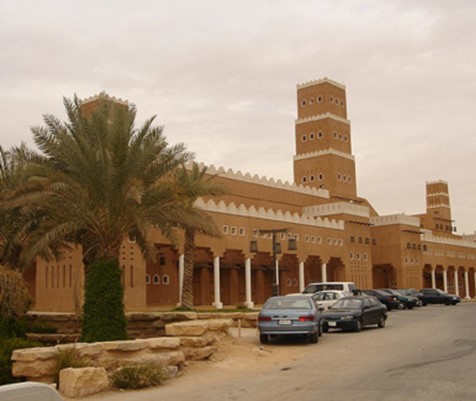
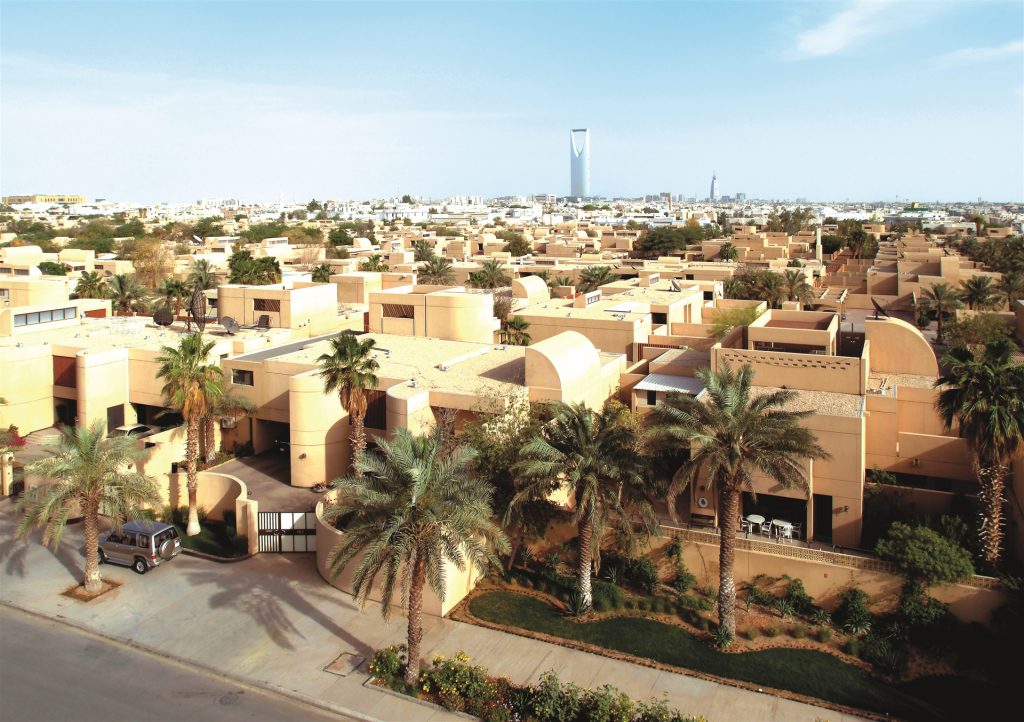
Ministry of Foreign Affairs Staff Housing Mosque
The Grand Mosque for the Ministry of Foreign Affairs Staff Housing Complex is among the most prominent mosques constructed by the commission in Riyadh. It has an estimated area of 1010 m2 and can accommodate more than 1,000 worshippers.
The Ministry of Foreign Affairs Staff Housing Complex Project in Riyadh won the Award of the Council of Arab Ministers of Housing and Construction, for its unique design that highlights the cultural and environmental features of its urban structures; in the middle of an environment that has religious, social, cultural, educational, and recreational requirements.
Diplomatic Quarter Grand Mosque
On the western side of the city, RCRC constructed the Diplomatic Quarter’s Grand Mosque next to the Al-Kindi Open Square, with an area of 5,830 m2 and accommodating 5,000 worshippers. The mosque won the Mosque Architecture Symposium Award presented by King Saud University in Shawwal 1417 AH.
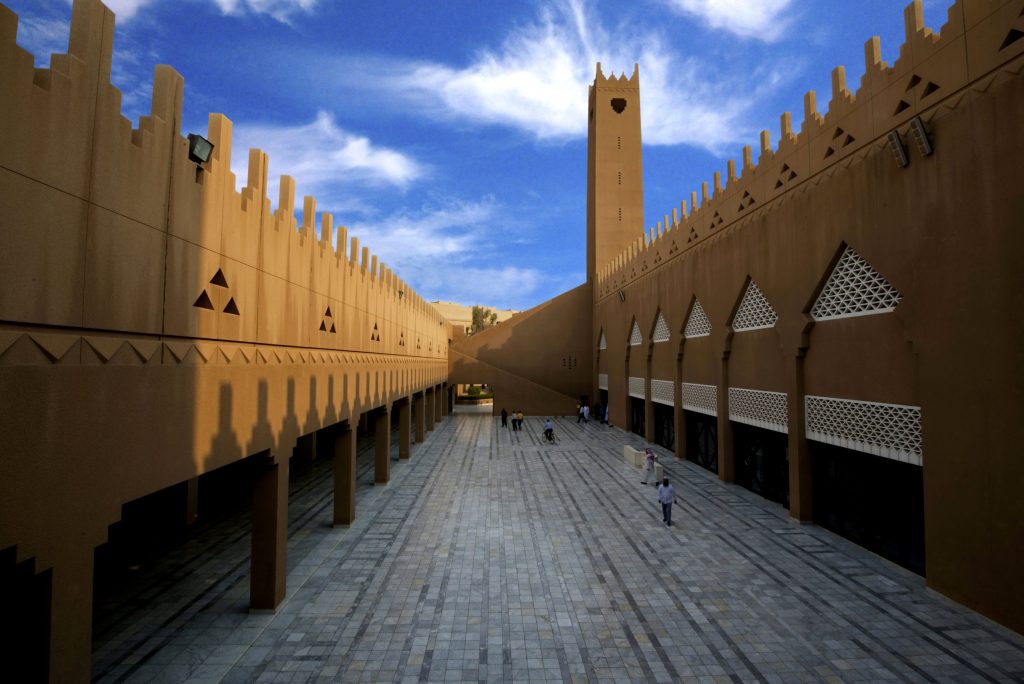
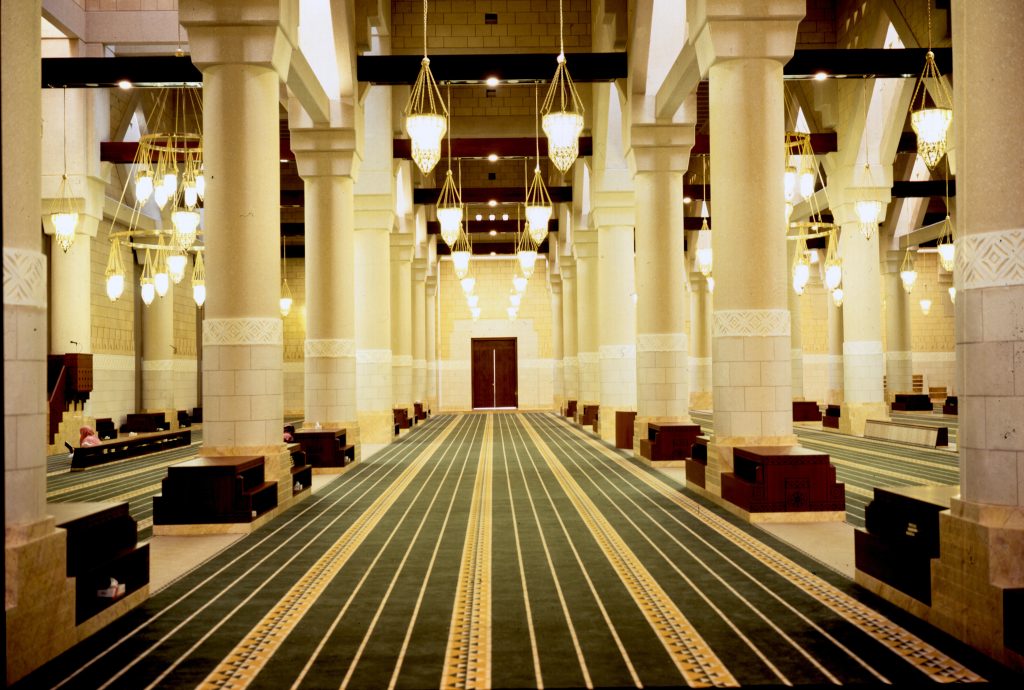
King Abdulaziz Mosque in Al-Kharj
King Abdulaziz Mosque in Al-Kharj was built on the main road leading to Riyadh city and the project is located on a land area of 11,000 m2. The mosque has a capacity of about 2,300 worshippers. It includes two separate praying places for men and women, an outdoor marble-covered yard, palm trees, a library, a school to memorize the Holy Quran, and a public square; In addition to roofed pathways around the mosque and parking lots to serve worshippers and market visitors, the mosque also has two symmetrical beacons with a height of 38 m2 each.
King Abdulaziz Mosque in Al-Khurma
The mosque’s project is located on a total land area of 3,360 m2 and contains several elements, the most important of which is the main prayer hall for men, with an area of 1,030 m2, and another women’s hall; as well as an outdoor yard and a lounge for memorizing the Holy Quran, as well as its service facilities.
The mosque’s interior has a number of openings in the walls and ceiling to provide natural lighting during the day to avoid excessive consumption of energy. The mosque is accessible through the outdoor yard, which includes three entrances overlooking the surrounding streets and extends over an area of 605 m2 with palm trees in its center.
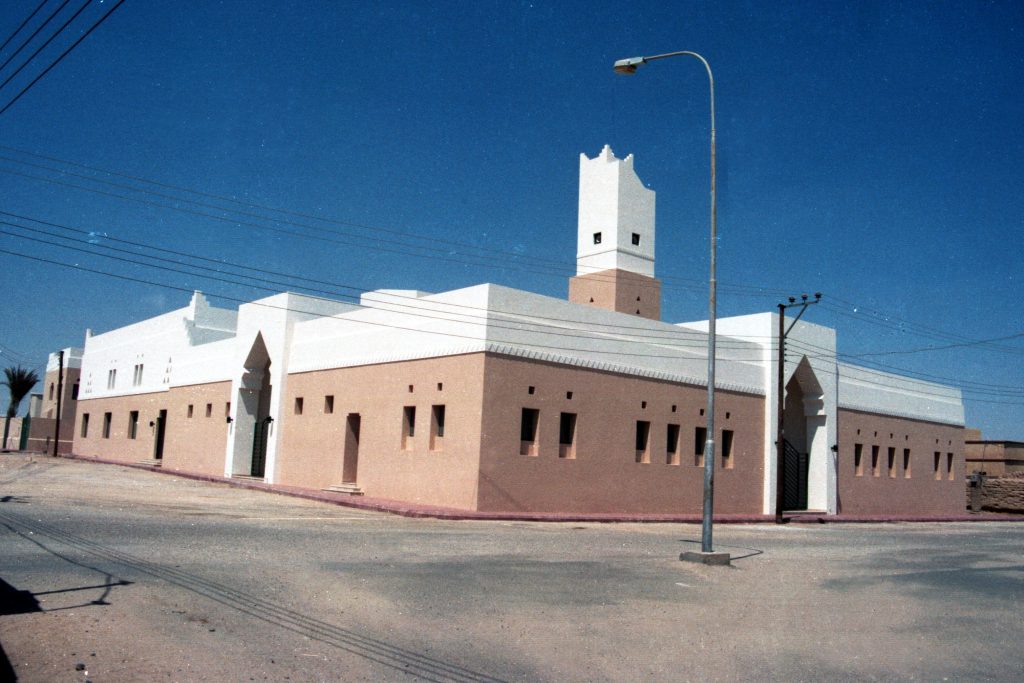

Prince Turki bin Ahmed Al-Sudairi Mosque in Al-Ghat
The modern building of Prince Turki bin Ahmed al-Sudairy Mosque in Al-Ghat governorate -230 km from Riyadh- was constructed near the old mosque land, which was removed due to the structural damage of the building.
The Royal Commission for Riyadh City has taken into account a number of necessary considerations to ensure that the mosque’s functions are maximized and relative to its surroundings; ensuring the quality and simplicity of construction to reduce maintenance requirements and extend the life of the mosque’s facilities.
The mosque has elements of the local architecture, and it contains a main prayer hall, an outdoor yard, and a beacon with an exterior staircase as well as service facilities. Moving umbrellas were added to the yard to accommodate worshippers during occasions and connect the mosque’s spaces with each other. The mosque accommodates about 2,000 worshippers as well as a separate section for women.
Other mosques
The list of mosques constructed by the Royal Commission for Riyadh City is quite long. Some of which are the following: the mosques of Ibn Musa, Abu Bakr al-Karkhi area, Ibn Zahr area and Abu al-Wafa’ al-Bouzajani area in the Diplomatic Quarter; as well as Imam Faisal bin Turki Mosque on Al-Thumairi Street next to Al-Masmak Fort, King Fahd Mosque in Al-Malaz district, Ibn Qaba’b Mosque next to the Riyadh General Court and King Saud Mosque in Nasiriyah.
